
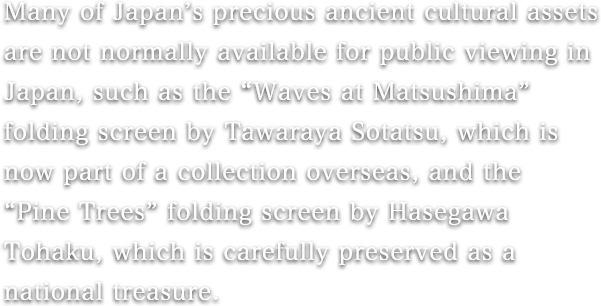

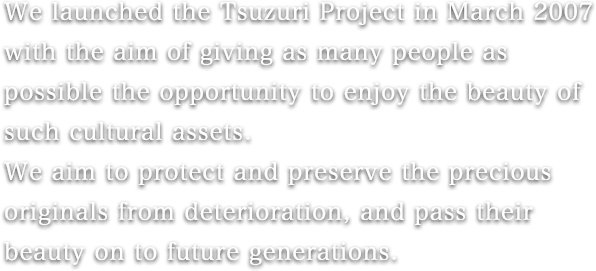

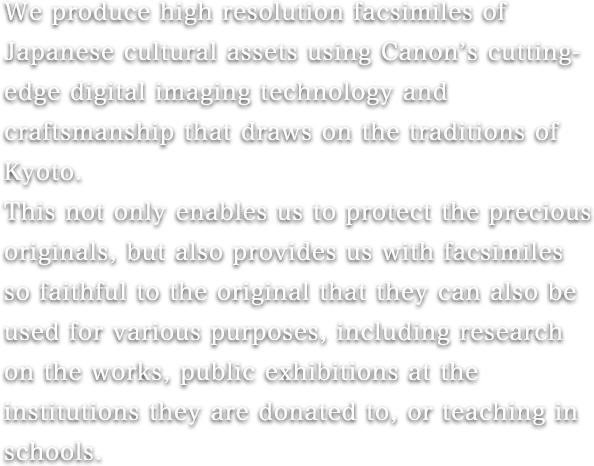
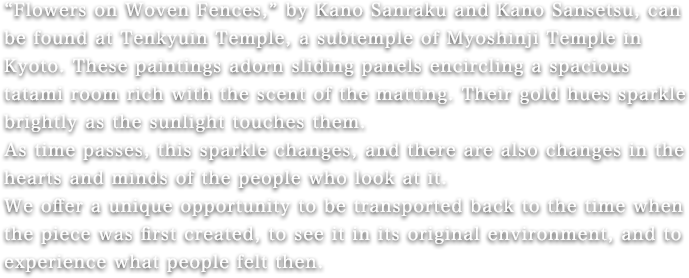
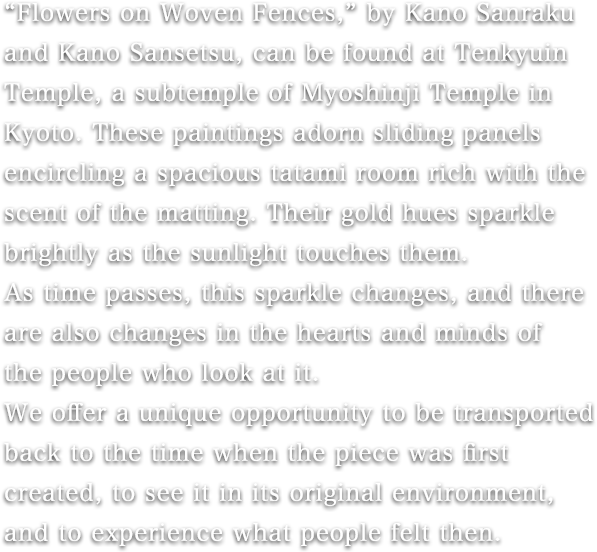


Overview
The "Tsuzuri Project" (Official Title: Cultural Heritage Inheritance Project) is a joint project organized by Canon and the Kyoto Culture Association (NPO). The Project aims to create and make use of high resolution facsimiles of cultural assets from Japanese antiquity, with keeping the original cultural assets in more favorable environments.
- Creation of high resolution facsimiles
- Canon SLR cameras are used to capture folding screens, sliding doors and other precious cultural assets from Japanese antiquity. The high resolution digital images are processed using Canon's unique precision color correction technology, and then printed out in their original size using Canon large format printers. Traditional crafts are combined with this digital technology, such as gold leaf application and mounting work wherever necessary to complete near-perfect replications of the original works. Using a specially designed pan-tilt head that allows multi-segmented photography, and Canon's unique color matching system vastly reduces the time and effort needed to produce the facsimiles with color rendition that is more faithful to the originals.
- Use of high resolution facsimiles
- By using high resolution facsimiles, the "Tsuzuri Project" makes it possible for the original works to be kept in more favorable environments, thereby preventing deterioration and ensuring that cultural heritage will be passed down to future generations.
These high resolution facsimiles are donated to the owners of the original works, to the shrines, temples, and museums that owned them before they have been owned in other countries, or to universities, local authorities, and others with a particular connection to cultural heritage. The facsimiles are then displayed to the public in various parts of Japan, allowing a greater number of people to get a closer look at these precious assets. Some schools use the facsimiles as 'living aids' for teaching Japanese history, art, and culture. In this way, the Project represents a new challenge that goes beyond the possibilities of conventional digital archives.
High resolution facsimiles are providing a greater number of people with the opportunity to experience outstanding works of Japanese art.
Themes of the ”Tsuzuri Project”
- *High Resolution Facsimiles of Japanese Art Abroad
- The purpose of this theme is to donate high resolution facsimiles of precious Japanese cultural assets that have been owned in other countries over the course of history to their former owners, art museums, etc. in Japan.
- *High Resolution Facsimiles of Historical Cultural Assets
- This theme promotes the use of high resolution facsimiles as 'living aids' for teaching Japanese history, and targets cultural assets that most people may remember from their history textbooks in elementary and junior high school.
- Project organizer
- Kyoto Culture Association (NPO)
- Partner organization
- Canon Inc.


